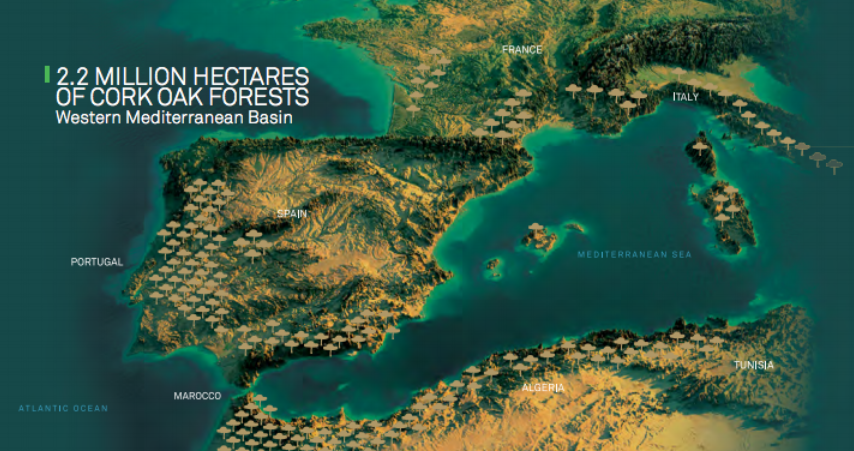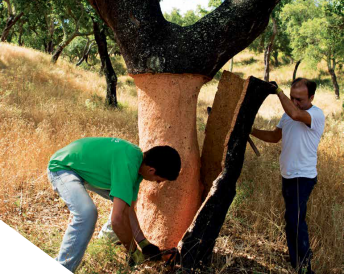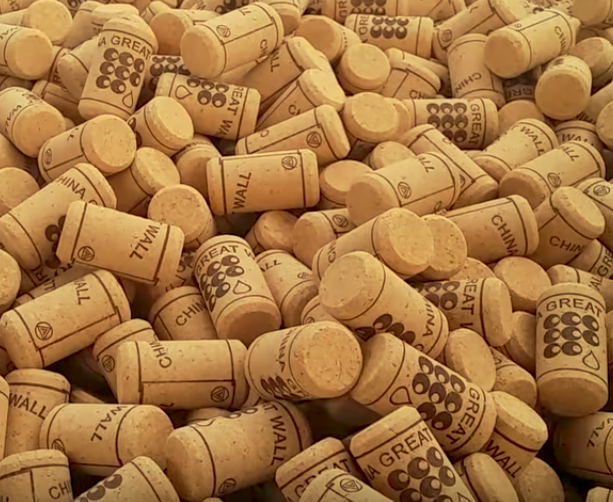Posted: Aug 20, 2017

Make it or break it was the question for the cork industry. Was bad corks and TCA taint, corked wines, going to kill the cork industry? Would “natural” cork fade out and be replaced by plastic corks and screw caps? This was a defining moment for the cork industry, a crisis. What happened?
A while back I had the opportunity to discuss this with someone who knows, when I met with Antonio Rios de Amorim, president, CEO and chairman of the board of Corticeira Amorim, the world’s largest cork producer. He has been running the Amorim group since 2001 when he took over from his uncle Américo Ferreira de Amorim (who died on 13 July 2017, said to have been Portugal’s richest person). Américo Amorim had been the driving force in building up the global presence of the Amorim Group. (The interview was done in March 2011, unpublished until now, but it is still very relevant.)
Today Amorim is the world leader in producing cork, both for use as stoppers in wine bottles and for many other purposes. Source: Amorim Cork Composites
Source: Amorim Cork Composites
Harvesting cork bark in Alentejo.
Back to the crisis that could have killed the cork industry.
In the 90s we started more and more to see “alternative closures” on wine, both plastic “corks” and screw-caps. There were several drivers behind this but perhaps the most important one was the increasing frequency of “cork taint”, when the cork gives a bad taste to the wine, a musty, dull, wet-cardboard character. It was getting more and more frequent for bottles closed with natural cork. Who wants to open that expensive bottle of wine only to discover that it is “corked”.
What is the situation today I asked Antonio Amorim?
When initially the plastic stoppers (and later, screw-caps) started to gain a lot of ground, notably in the UK in the 90s, it led to some serious soul searching in the cork industry: “What we have witnessed in the last 10-12 years in the cork industry is a real revolution. The cork industry really questioned itself. We started to innovate, started to introduce new technologies. We evaluated the whole of our supply chain, and started to bring in scientists to evaluate how we could improve the technical performance of our cork stoppers.”
This had a positive effect and reversed the trend towards alternative stoppers. “Cork is today in good health. We are actually gaining market share, both from synthetic stoppers and from screw caps”, says Antonio Amorim. “The market is finally realising the value of cork for three main reasons: A technical reason, today cork has improved its technical performance. Cork has launched new products and can compete technically and economically. And cork is by far the most ecological, the most green, closure.” Antonio also says that for many consumers, a natural cork in the neck of a bottle is a sign of quality in itself.
But this “revolution” that Antonio Amorim talks about what was it about? The consumers were increasingly seeing bottles with cork taint (TCA), so what specifically did the cork manufacturers do when they were facing this crisis?
You can watch the full interview on video here. (The article continues below.)
“We did three very simple things”, says Antonio. “First we looked at the critical points in the production process, from the tree that we get the cork bark from up to the end. Where there might be an issue we tried to prevent it. We also launched new technologies, for example, steam distillation [to remove TCA] and other technologies. Thirdly, the quality control process has improved, for example with gas-chromatographs.” These three steps led to the cork industry revolution: “a mentality revolution and a technical quality revolution.”
So, does this mean that cork taint, wine contaminated by TCA, has been eliminated?
“Today we have not only virtually eliminated it but we have also demonstrated that cork in comparison with other closures is better from a technical point of view.”
What is today, in your view, the outlook on the world market for natural cork?, I asked him.
Antonio sees the outlook as very positive but concedes that on some markets alternative closures are still strong: “The early adopters of alternative closures, namely New Zeeland and Australia, started with plastics and are today very positive towards screw-cap. But some of them are realising that screw-cap is not the ideal solution for a quality wine. The premiumisation of Australian wines will move them towards natural cork. And then you have the UK supermarkets introducing screw-cap on buyer’s-own-brands and similar wines.”
Perhaps the most important factor though, is the consumer. How does Amorim see the consumer preferences evolving?
Antonio considers the consumer as his most important ally, since consumers increasingly see natural cork as a sign of quality.
“The consumer perception is changing in favour of cork. Consumers prefer cork. American consumers are very attached to cork; French, Italian, Spanish, Portuguese consumers are very attached to cork. Some, e.g. in Scandinavia, New Zeeland, Australia, accept more easily alternative closures, but we are also trying to convince them,” Antonio explains. Source: BKWine | You Tube
Source: BKWine | You Tube
After this difficult period in the 90s and early 2000s, what is the outlook for the cork industry today?
“We are positive, certainly very confident. The work that the cork industry has done over the last 10 years shows that improvements had to take place, and they have taken place. The market is now getting aware of these improvements. We have to continue the work to prove to the consumers that cork is the most preferred closure.”
The cork industry is now very well afloat.
By Per and Britt Karlsson
July 19, 2017
Source: Forbes.com
Go-Wine's mission is to organize food and beverage information and make it universally accessible and beneficial. These are the benefits of sharing your article in Go-Wine.com


The Wine Thief Bistro & Specialty Wines is a locally owned small business in downtown Frankfort, IL offering world class wines in a relaxed, casual gathering spot for friends and family. Offering world class virtual tastings and touchless carryout.
https://www.twtwineclub.com/aboutus
Go-Wine 25 Great Wineries in US selection prioritizes quality, value and availability.
www.go-wine.com/great-wineries-in-america
Tasting wine is a nice experience, but visiting the places in which wine is made is a magic moment. Available in New York City for touchless pickup.